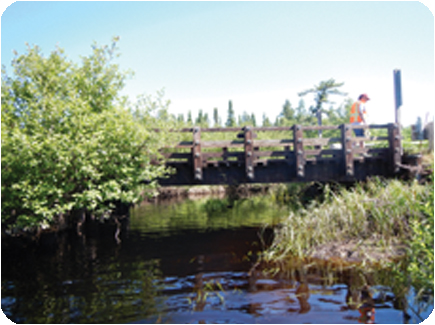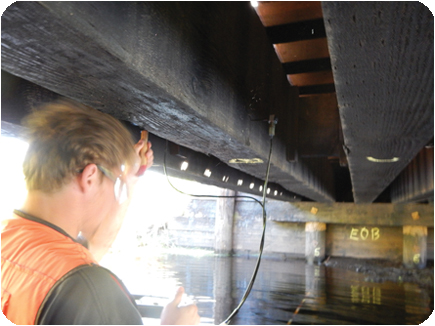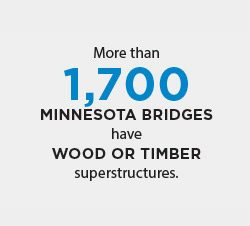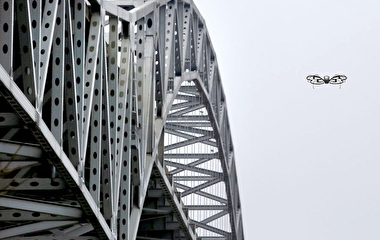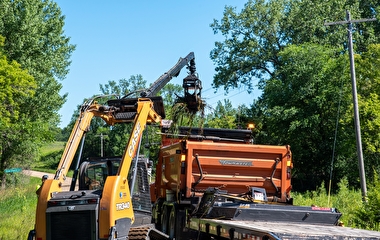Not all bridges in the United States are made of concrete and steel. Even today, timber bridges remain an important part of the U.S. roadway system, especially in rural areas: more than 50,000 bridges in the U.S. and more than 1,700 Minnesota bridges have wood or timber superstructures, while countless more have timber decking or substructure elements.
Because routine inspections have the potential to miss internal decay or deterioration using traditional techniques, the service life and load-carrying capacity of a timber bridge can be in question. In addition, the possibility of a timber bridge failure creates safety concerns. To improve the quality of timber bridge safety inspections, a research project led by researchers at the University of Minnesota Duluth’s Natural Resources Research Institute (NRRI) identified new advanced inspection techniques and equipment and developed implementation strategies.
be used in Minnesota. Photos: Brian Brashaw
“Current bridge inspection procedures are mostly limited to visual inspection of the wood components, along with ‘sounding’ with a hammer and coring to confirm suspected damage areas,” says Brian Brashaw, director of the Wood Materials and Manufacturing Program at NRRI. “These techniques have generally been adequate for advanced decay detection, but they are not adequate when the damage is in the early stages or is located internally.”
The research team began by identifying advanced inspection technologies for timber bridges that could be used effectively in Minnesota. These technologies included moisture meters to identify areas susceptible to timber decay, stress wave timing to locate and define areas of decay non-invasively, and resistance micro-drilling to confirm and quantify bridge element decay.
"When used by experienced inspectors, this equipment offers the potential to locate and quantify the extent of decay that is present in bridge elements, often before it reaches an advanced stage,” Brashaw says.
The project also included several activities to put the research findings into practice. The team developed standard inspection protocols, integrated the results into MnDOT’s bridge data management software, developed a new timber bridge inspection manual, and held outreach training across Minnesota for more than 150 inspectors and engineers.
“Good inspections can catch potential problems early and possibly avoid emergency closures or load postings,” says Dave Conkel, MnDOT State Aid bridge engineer. “It enhances safety while also helping stretch available funding for local bridge repair and replacement.”
Finally, the research team completed an economic assessment on the use of advanced inspection technologies for timber bridges. “We quantified the possible extension of the timber bridge life cycle before replacing the bridge or posting weight restrictions, and we found that using these bridge inspection techniques and equipment does provide a positive return on investment,” Brashaw says.
“The project helped put advanced inspection tools in the hands of our inspectors,” adds Bruce Harbargen, county engineer in Beltrami County. “The tools are now available, and the inspectors have the knowledge on how to use them. Timber bridge inspection has been significantly improved.”
MnDOT has purchased three sets of the recommended inspection equipment for use by bridge owners to conduct timber bridge inspections. In this recently funded effort, NRRI will manage the equipment use and provide support to inspectors across Minnesota.
The Minnesota Local Road Research Board and the Iowa Highway Research Board provided financial support for the project. The research team included MnDOT’s Offices of Bridges and Structures and State Aid for Local Transportation, Iowa State University’s Bridge Engineering Center, the USDA Forest Products Laboratory, and HDR, Inc.
